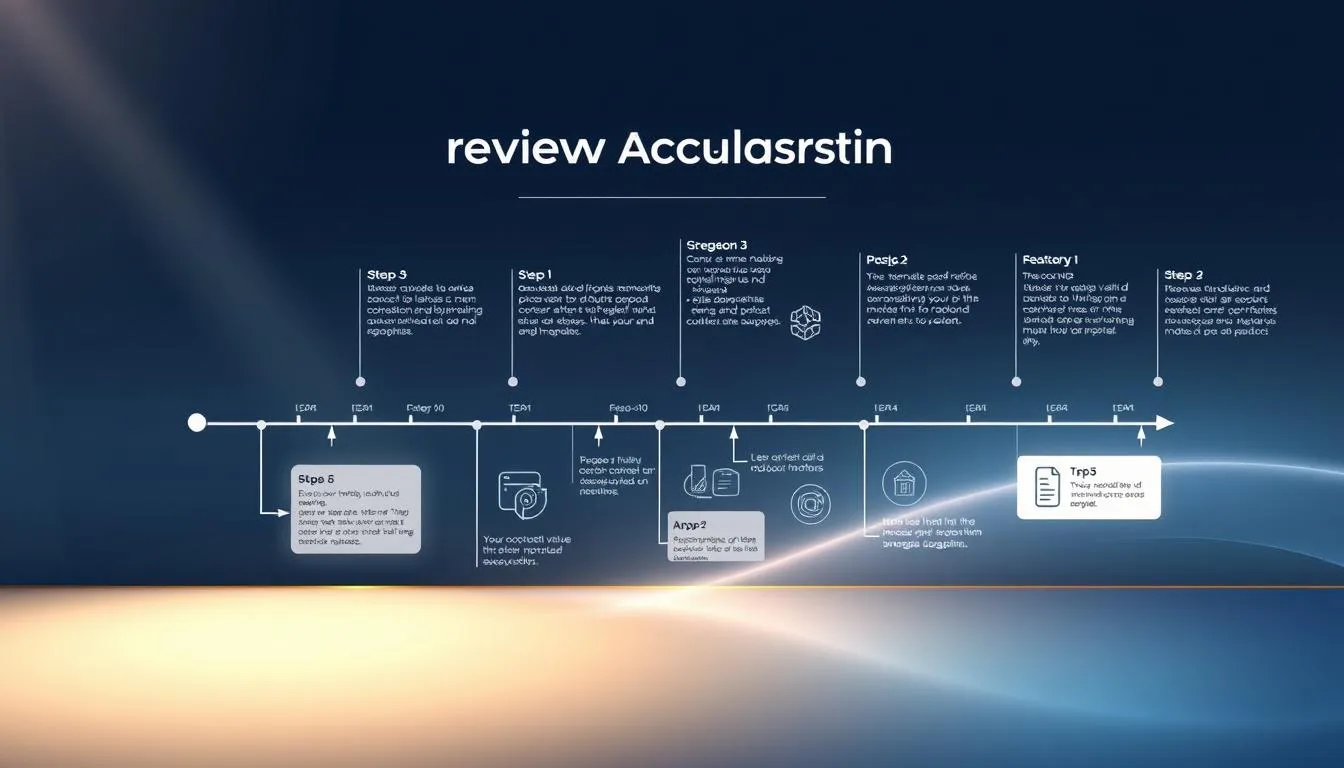Quick fact: shoppers are 270% more likely to buy an item with five reviews than one with none.
That gap shows why review content must sit at the center of any ecommerce plan. Authentic feedback adds fresh content, builds buyer confidence, and drives clicks that turn into conversions.
The guide ahead covers two core review assets: on-site user-generated reviews and in-depth expert review pieces that match Google’s quality signals.
Real results back this approach. Bazaarvoice finds negative feedback still helps shoppers choose, while Petco gained an 80% boost in organic traffic by encouraging honest reviews through sampling. To organize your SEO strategy more effectively, learn about keyword clustering techniques. Google Seller Ratings can also lift ad CTR near 10%, making ads more efficient.
In short: combine scalable customer reviews with high-quality expert analysis to widen keyword reach, improve engagement, and lower acquisition costs over time. To complement your product review SEO strategy, explore our comprehensive guide on general SEO for affiliate blogs.
Key Takeaways
- Five reviews can raise purchase likelihood by about 270%, showing clear business impact.
- Use both user reviews and expert review content to win search visibility and trust.
- Structured data, natural language from customers, and engagement all boost search results.
- Negative feedback, handled openly, builds credibility and aids decision-making.
- Review-driven gains help organic and paid channels—expect higher CTR and lower costs.
Understand the role of product reviews in SEO and conversions
Real customer feedback is one of the strongest signals sites can use to build trust and lift conversions. BrightLocal finds 92% of shoppers trust user-generated content more than ads, and that trust directly affects click behavior.
Why user-generated content drives trust, traffic, and rankings
User-written reviews supply natural language that matches long-tail queries. That language increases organic traffic and helps pages rank on competitive terms. For guidance on optimizing your review content further, check out our review post optimization tips.
Engagement grows when visitors read detailed experiences: dwell time rises, bounce falls, and search engines reward useful pages.
Negative feedback, pros and cons, and the conversion lift
Negative reviews are normal and valuable. Bazaarvoice reports 60% of shoppers want pros and cons. Balanced commentary makes buying decisions faster and boosts confidence in your brand.
Spiegel Research Center shows purchase likelihood jumps about 270% with five reviews versus none. That minimum volume often flips a visitor into a buyer.
How fresh, keyword-rich review content improves crawl and visibility
Google favors sites that update regularly. New customer reviews add timely, keyword-rich sentences that broaden long-tail coverage and prompt more frequent crawling.
Beyond keywords, reviews create signals like helpfulness votes, interactions, and star snippet eligibility. Those elements can raise CTR in search results and compound visibility gains across the site and local profiles.
SEO for product reviews: a step-by-step game plan
Begin by defining what success looks like: set targets for review volume, recency, average rating, CTR, conversion rate, and revenue impact. These KPIs turn a feedback program into a measurable channel.
Next, identify data sources—post-purchase events, email and SMS sends, on-site prompts, and analytics. Tag each touchpoint so you can see which channels actually generate the most review submissions.

Set objectives, KPIs, and data sources before you start
- Align targets with search goals and business outcomes.
- Track volume, freshness, sentiment, and conversion lift.
- Centralize moderation and reporting to reduce manual work.
Map review content to search intent across the funnel
Map queries into awareness, consideration, and decision stages. Then pick review formats that answer each intent—comparison snippets for awareness and detailed usage notes for consideration.
Build a review acquisition and placement roadmap
- Plan where to collect and show feedback: main listings, category hubs, and a testimonials hub.
- Create an automated cadence using post-purchase messages, loyalty nudges, and QR codes.
- Choose tools that automate requests, filter spam, and report performance so you can iterate quickly.
“Define standards, respond fast, and use data to improve the ask and the placement.”
Collect and optimize user-generated reviews on your product pages
A smart review program focuses on timing, placement, and trust signals that guide buying decisions.
Ask at moments that matter: send automated emails or SMS soon after delivery, after a positive support call, or on reorder. Use one‑tap links and QR codes to cut form steps and respect customers’ time.

Timing your ask, simplifying the flow, and ethical incentives
Keep incentives modest—small discounts or a monthly drawing—so feedback stays authentic. Short, mobile-first forms lift completion and word count.
Prominent placement: stars, snippets, and testimonial widgets
Place star ratings high on the page and full reviews lower, near specs or CTAs, like Zappos does. Add snippets and widgets so social proof appears across the site without cluttering layout.
Encourage specifics: features, use cases, and pros/cons
Prompt customers to describe features, fit, and use cases. Those details naturally add long-tail keywords and help search engines understand depth.
Moderation, verification, and showcasing social proof across the site
Use verification badges and media uploads to raise trust. Allow filters by date, rating, and helpfulness and syndicate strong review content to category pages and a testimonial hub.
“Place star ratings up top and surface fuller reviews near product details.”
Create in-depth, expert product reviews that Google’s reviews system rewards
High-value reviews come from hands-on testing and clear, reproducible methods. Readers and search engines favor work that shows how conclusions were reached, not just a spec roundup.
Original research, hands-on experience, and comparative analysis
Test devices yourself, record benchmarks, and compare direct alternatives side by side. Use charts, teardown photos, or timing logs to make differences obvious.
Offer clear verdicts by buyer type—best for beginners, best for pros, and best value. That helps readers pick fast and reduces decision fatigue.

E‑E‑A‑T signals: expertise, evidence, and transparent methodologies
Show author credentials and list testing steps. Disclose affiliate links, sponsorships, and sample sourcing to keep trust high.
Link to primary documentation or published tests that back your claims.
Avoid thin summaries; add data, visuals, and unique insights
- Include side-by-side comparisons and benchmarks that competitors lack.
- Use unique photos and tables to add original value.
- Use AI as a drafting tool, but rely on hands-on knowledge to finalize conclusions.
“Commit to real testing, clear methods, and honest verdicts to win both readers and rankings.”
For deeper guidance on how Google rewards evidence-backed content, see Google’s reviews system.
Technical setup: schema markup, rich results, and local signals
Technical markup turns raw feedback into visible search results that attract clicks.
Start by adding Product, Review, and AggregateRating schema to key templates so search engines can parse ratings and review counts. Mark up name, image, SKU, offers, ratingValue, and reviewCount to give clear, machine-readable signals.
Validate and monitor structured data
Use Google’s Rich Results Test to confirm markup eligibility and fix warnings. Then watch Search Console enhancements for errors and coverage changes.
Local signals and seller ratings
Manage Google Business Profile reviews to boost Local Pack visibility. Keep a steady flow of recent feedback and respond quickly to raise local ranking.
Operational checklist
- Implement markup site‑wide on main product pages and templates.
- Set QA steps whenever templates change and run the Rich Results Test.
- Pair schema with fast page performance and tidy internal links.
- Feed an authorized Seller Ratings partner so ads can show stars and lift CTR.
- Track impressions, CTR, and average position to measure impact on search results.
“Structured data helps search engines display context and can unlock richer results that drive clicks.”
Placement and promotion: where reviews work hardest
Smart placement and simple promotion make customer feedback do more heavy lifting.
Feature concise star ratings near titles on key pages to deliver instant credibility. Deeper review modules should sit lower where shoppers explore specs and trust signals.
Use the homepage to showcase rotating quotes and badges so potential customers see social proof early. Build a dedicated testimonial page that aggregates categories, filters, and media to aid discovery and search engines.
Repurpose and nudge
Turn top lines into action: use short quotes as email subject lines, ad headlines, and social posts. Place review nuggets beside CTAs to reduce friction at checkout.
“Reassurance near purchase points—shipping, returns, support—cuts hesitation and raises conversions.”
| Placement | Impact | Best use |
|---|---|---|
| Homepage tiles | Broad trust; discovery | Rotating quotes, badges |
| Product title area | Instant credibility | Star ratings, brief summary |
| Checkout snippets | Reduce abandonment | Reassurance lines addressing common objections |
| Testimonial hub | SEO discovery; deep trust | Filtered reviews, media, internal links |
Track placement performance across homepage, PDP modules, and checkout snippets. Use that data to move the most persuasive content where it converts best.
Manage, respond, and measure to improve rankings and revenue over time
Active review management turns scattered feedback into measurable growth for your site and local listings.
Quick wins start with a response playbook that thanks the author, acknowledges the issue, and offers a clear next step. Fast, public replies build trust; nearly 90% of buyers say a brand that responds raises purchase likelihood.
Make analytics central. Track review volume, recency, average rating, sentiment trends, and keyword lift from recurring phrases. Tie changes in CTR and conversion to specific pages so teams see real revenue impact.
Response strategies that build brand trust and impact local ranking
Prioritize speed and clarity. Route escalations to support and document resolutions. Consistent, public engagement can boost local visibility because search systems favor active management.
Analytics: track review volume, sentiment, keyword lift, CTR, and conversion
Use sentiment tools to spot systemic issues and invite promoters to add case stories. Report on revenue alongside traffic and ranking so stakeholders understand the business value.
Backlink and PR opportunities from third‑party review sites
Positive listings on trusted sites often generate natural links and referral traffic. Build relationships with niche publications to earn coverage that supports authority and conversions.
| Activity | Metric | Priority | Expected impact |
|---|---|---|---|
| Public replies | Response time, sentiment | High | Higher trust, local ranking lift |
| Sentiment analysis | Trend score, recurring phrases | Medium | Product fixes, fewer negatives |
| Third‑party outreach | Links, referral traffic | Medium | Authority and referral growth |
| Revenue reporting | Conversion, revenue per page | High | Stakeholder buy-in and budget |
Conclusion
Combine authentic customer feedback and expert analysis to create durable gains in visibility, trust, and sales. Scalable user voices add fresh content, while hands‑on writeups add credibility and depth.
Operational focus matters: set clear KPIs, collect feedback ethically and at the right moments, place star ratings and full reviews where shoppers see them, and keep fast moderation and replies to protect your brand.
Don’t skip the technical layer: add Product, Review, and AggregateRating markup and validate it with the Rich Results Test. Manage your Google Business Profile and repurpose top feedback across email, social, and ads while tracking CTR and conversion to guide investment.
Start with one product page, implement schema and smarter placement, launch a simple review request flow, and iterate on real data for steady, defensible results.
FAQ
How do user-generated reviews affect visibility and trust?
User-written feedback shows real experiences and builds social proof that influences buyers. Fresh, detailed reviews increase crawl frequency and provide long-tail phrases that help pages rank higher in search results while boosting conversion rates.
Should I feature negative feedback on product pages?
Yes. Balanced pros and cons increase credibility and help shoppers trust your brand. Highlighting how you resolved issues also improves perceived transparency and can lift conversions more than only showing perfect ratings.
What’s the best timing and method to request reviews?
Ask shortly after delivery or use, when the experience is still fresh. Keep the flow simple with one-click ratings and short prompts. Offer ethical incentives like discounts on future purchases, and avoid manipulative tactics.
Where on my site should I display customer ratings and testimonials?
Place ratings on product pages, the homepage for popular items, checkout pages for reassurance, and on a dedicated testimonials page. Also repurpose quotes in emails and social ads to amplify trust across channels.
How do I optimize reviews for search engines and rich results?
Add Product, Review, and AggregateRating structured data to relevant pages and validate with Google’s Rich Results Test. Use descriptive review text with feature-focused phrases to target long-tail queries.
What signals show a high-quality expert review?
Include hands-on testing, clear methodology, original data or comparisons, images or video, and transparent authorship. Those elements communicate expertise and help search systems reward the page with better placement.
How can I encourage reviewers to leave useful, keyword-rich feedback?
Prompt reviewers with specific questions about features, use cases, and outcomes. Ask for pros and cons and suggest including model numbers or comparisons to similar items to naturally surface valuable search phrases.
How do I handle moderation and fake reviews?
Use verification tools to confirm purchases, flag suspicious patterns, and maintain clear moderation policies. Display verified-buyer badges and document your process to build credibility with users and platforms.
What metrics should I track to measure review impact?
Monitor review volume, average rating, sentiment trends, keyword lift, click-through rate, and conversion rate. Also track rich result appearances and referral traffic from third‑party review sites for backlink and PR value.
Can local business listings and seller ratings improve ad performance?
Yes. Google Business Profile reviews influence Local Pack visibility, while seller ratings can boost ad CTR and lower cost per click. Encourage local customers to leave feedback and keep profiles updated.
